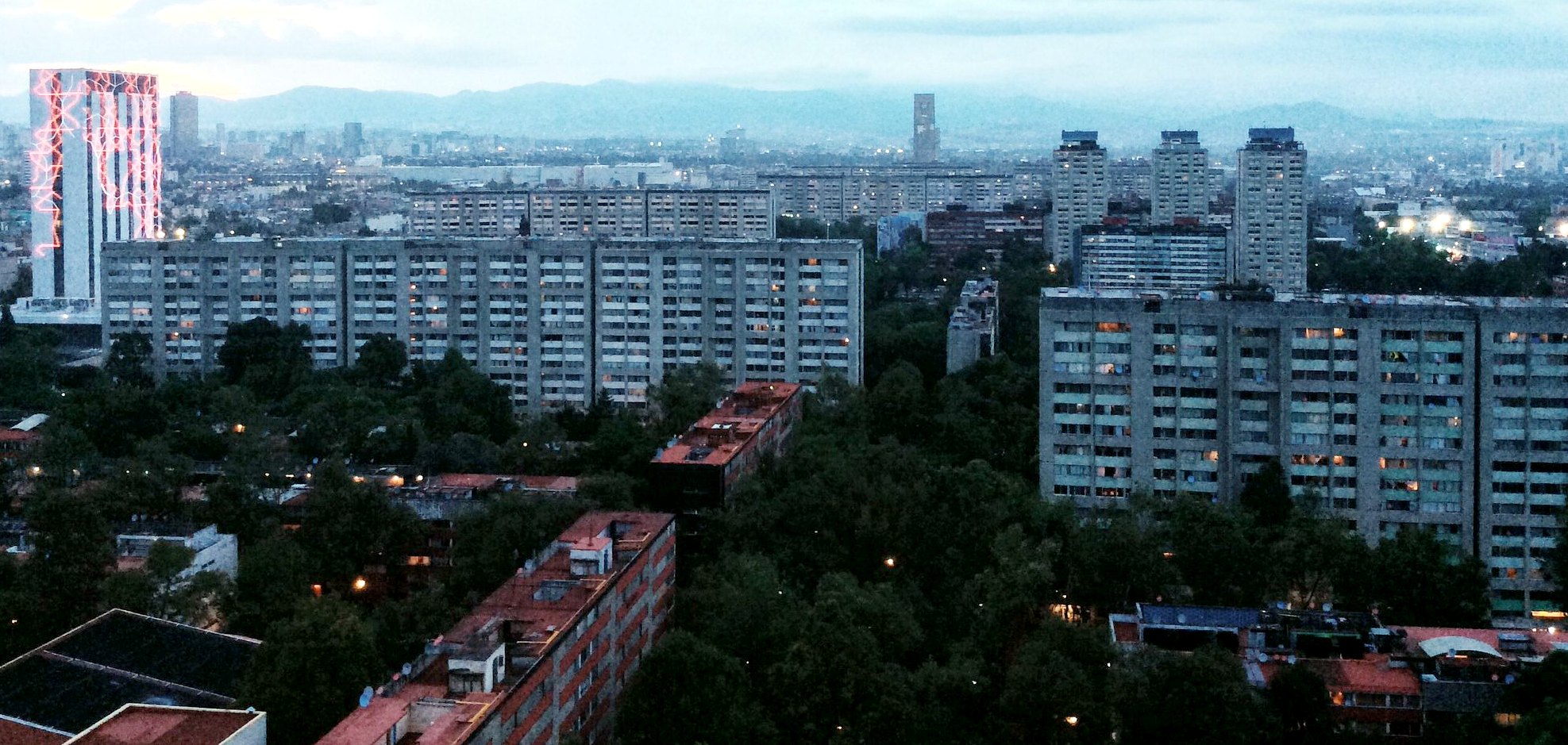
Below is a brief history of Tlatelolco. It’s especially intended for those visiting Mexico City’s Three Cultures Plaza and the broader Tlatelolco area. Among the most visited places in the City, Tlatelolco has a past every bit as complex and fascinating as Tenochtitlan and Mexico City. Indeed, one could hardly expect to know one without the other.
Tlatelolco history begins in 1337. That’s just 13 years after the traditional founding of Mexico-Tenochtitlan in 1324. A group of dissident Mexica people broke away from the dominant rulers of Tenochtitlan. They founded México-Tlatelolco principally to be able to continue running their market, the liveliest, and eventually the biggest in Central Mexico and America.
The name in their own language, Nahuatl, refers to the area as on the northern shore of the island. It could be translated, roughly, as “a sandy point” or a small hill of sand. The Tlatelolca people, as they are known, sometimes allied with Tenochtitlan during conflicts. They would remain independent until 1473 when Tenochtitlan again subdued its insurgent northern neighbors.
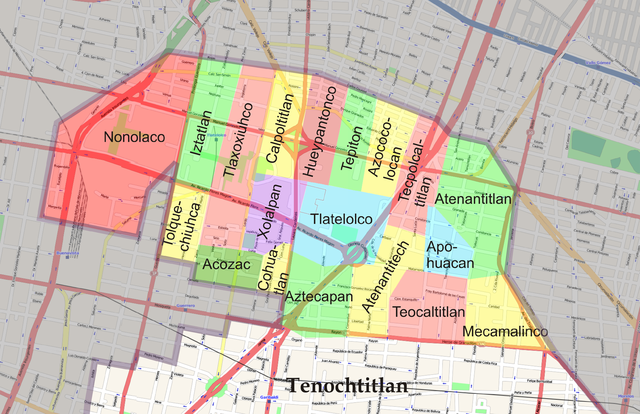
The main pyramid or temple of the town went through six different phases of construction. But after the 1473 victory of Tenochtitlan, the area was nearly completely subsumed within Tenochtitlan.
The early chronicler, Bernal Díaz del Castillo, said of their market that the Spanish “were astonished at the number of people and the quantity of merchandise that it contained, and at the good order and control that was maintained.”

Tlatelolco was almost entirely destroyed after the fall of Tenochtitlan. Its temple, a pyramid today visible in the Three Cultures Plaza, would remain a landmark in the area for many years after.
By 1533, the Colegio de la Santa Cruz de Tlatelolco opened as the first institution of higher learning in the Americas. It would remain the most important center of sciences and arts during the first half of the 16th century. It constituted a scientific establishment in which Nahua medicine was preferentially cultivated. And it was the school of political sciences in which the sons of the caciques prepared to govern Indian villages.
The indigenous people of the neighborhood built the Tecpan on the ruins of the old Tlatelolco royal palace. Today a museum, it became the seat of the government of the indigenous people of the early colonial period. But like the college, a well organized and ambitious educated people did not sit well with the Spanish authorities.
The market of Tlatelolco was gradually abandoned. Merchants took up their trade in Tepito and especially in the Merced area. It’s a tradition of independent commerce that continues even today. The Tlatelolco area was largely depopulated. However the Tlatelolca people also took control of land reclaimed from Lake Texcoco. Here they created the Hacienda de Santa Anna Aragón, today making up most of the San Juan de Aragón area of the City.
During the USA invasion of 1847, defensive trenches being dug again revealed numerous archaeological finds, including human remains. Most of them were looted and lost. The area was then used as a storage area by shipping companies. By the end of the 19th century, this had expanded into a giant railyard.
The Santiago Tlatelolco Military Prison was virtually surrounded, not just by the rail yards, but also by mass graves. The dead from the Mexican Revolution, and from countless plagues, had all ended up here.
Only in 1940 did archaeologists take real interest in the area. When work on the giant Nonoalco-Tlatelolco Urban Complex began in the 1960s, a systematic study of the area was carried out, too.
The Conjunto Urbano Nonoalco Tlatelolco is still officially the Conjunto Urbano Presidente López Mateos. It’s the biggest apartment complex in Mexico. The complex was built with 102 apartment buildings. In its day, it had it own schools, hospitals, shops and more. It’s can broadly be considered the summation of the 20th-century experiment in mass social housing projects.
Served by Metro Tlatelolco, it was the foremost showcase of housing of its decade. It replaced the massive central Mexico City rail yard, and became one of the most famous housing developments in the world. It remains so even today.
The 1967 Treaty of Tlatelolco established a nuclear weapon-free zone throughout Latin America and the Caribbean. It’s been signed and ratified by all of the countries of the region. Though it remains little known, it’s been an important part of the identity of Tlatelolco residents ever since.
The massacre just one year later marked the beginning of the end of the idealism that the master-planned housing complex had once symbolized. Political unrest in Mexico, (and in many Western nations at the time), reached a head as the Summer Olympics were set to begin in October. Students who’d already been protesting for months marched to the Plaza de las Tres Culturas.
On October 2, 1968, hundreds were gunned down by military and police. The exact number will never be known, but an estimated 15,000 bullets were fired and at least 300 dead and 700 injured have been confirmed. 5,000 protesters were arrested.
Mexico City has never been the same and the event is still commemorated every October 2.
On September 19, 1985, the iconic Nuevo León building collapsed as a result of a strong earthquake. Again, exact numbers of the dead are not known. Many will say that architect and master-planner, Mario Pani crashed down here, too. His reputation never recovered.
As a result of subsequent quakes and aftershocks, 13 buildings in the overall complex were demolished. The community has never recovered to anything like what it had been in the late 1960s and 70s. Further earthquakes in 1993 caused the condemnation of still other buildings. Many residents eventually undersold or abandoned their apartments.
Today the complex includes 90 apartment buildings. Almost all residents are of middle to middle-low income. Still, Tlatelolco remains a strong symbol of solidarity. It’s a fascinating trip into the many pasts – modernist, ancient, and colonial – that have given the City its current face and outlook on the world.
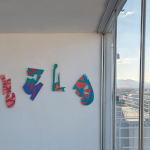
A high-rise gallery of art and architecture on the very eastern edge of Tlatelolco . . .
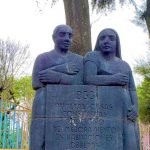
A tiny neighborhood park bears witness to a historical neighborhood . . .
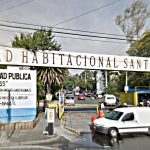
One of the grandest of 1950s housing experiments in Mexico City . . .
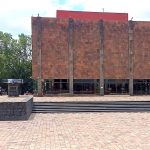
One of Mexico City's most famous residential neighborhoods is today a leafy Modernist neighborhood....

A major cultural venue in Iztapalapa...